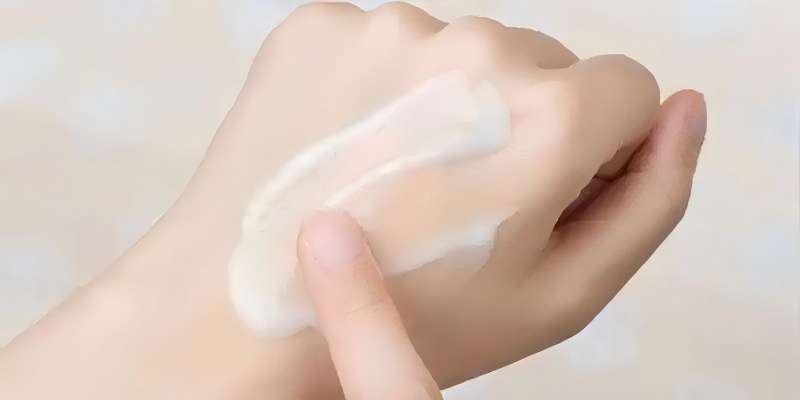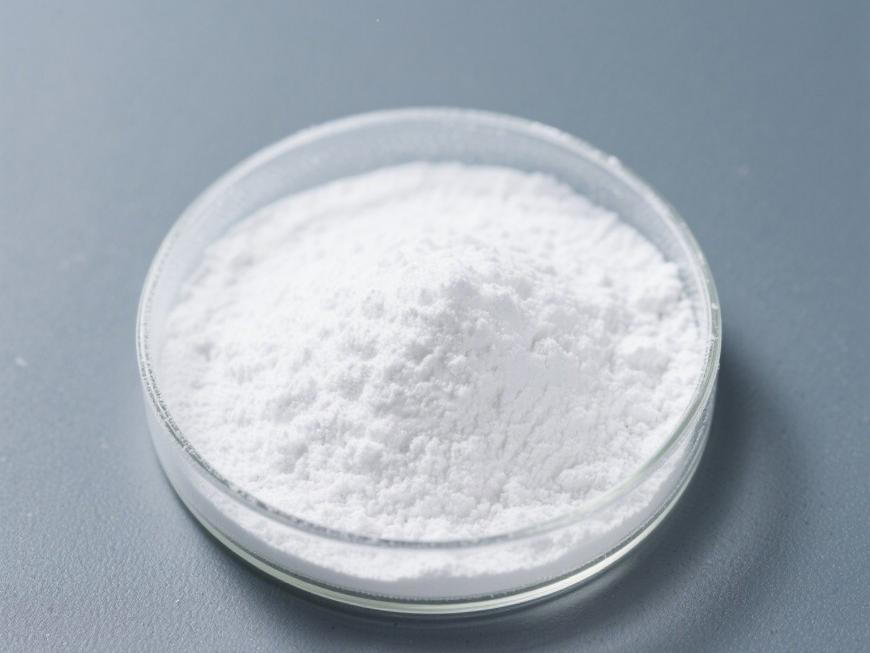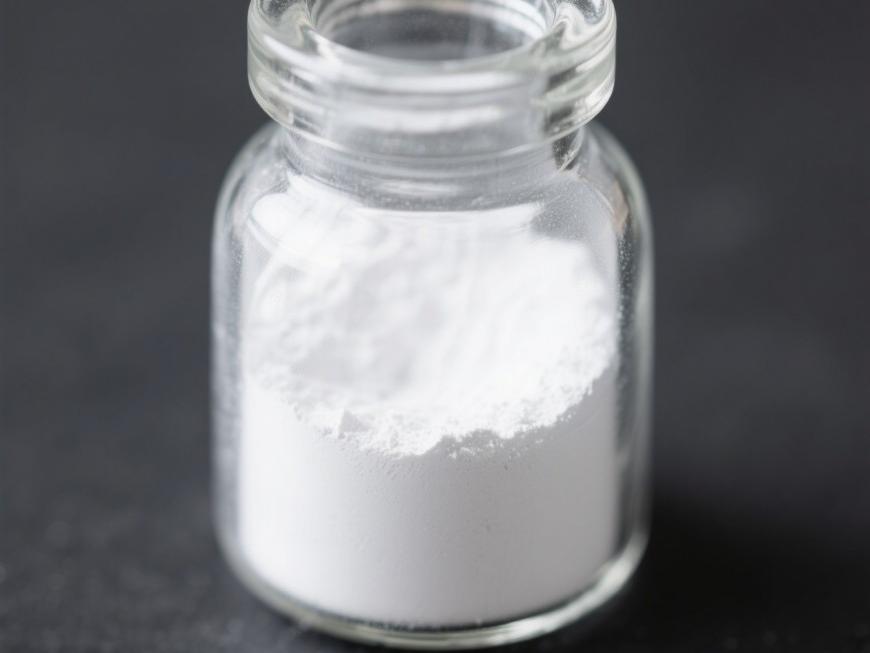How Hyaluronic Acid Elevates Your Cosmetic Formulations
As a natural macromolecular polysaccharide, hyaluronic acid has become a highly favoured core ingredient in the global cosmetics and functional food sectors due to its exceptional water-retaining capacity and unique physicochemical properties. Its molecular structure comprises repeating units of β-D-glucuronic acid and β-D-N-acetylglucosamine, lacking sulphur groups. This distinguishes it from other mucopolysaccharides, exhibiting high viscosity, strong hydrophilicity, and mild acidity.
Hyaluronic acid's most remarkable property lies in its exceptional hydration capacity—it can absorb and retain moisture equivalent to 500 times its own weight, earning it the title of ‘natural moisturising factor’. This characteristic enables its extensive application in serums, masks, creams, oral beauty supplements, and various hydrating functional foods, imparting outstanding moisturising texture and biocompatibility to products.
Green Spring Spring Technology leverages advanced biopreparation techniques to provide clients with high-purity, multi-molecular-weight-range hyaluronic acid powder. We fully support cosmetics enterprises in developing safer, more effective, and market-differentiated innovative products, jointly advancing the beauty industry.
1 Breakthrough in Hyaluronic Acid Moisture-Retention Technology: Redefining Skincare Hydration Standards
Within skincare and personal care, hydration remains the core efficacy consumers prioritise.Hyaluronic acid, with its exceptional water-retaining capacity, has become an indispensable key ingredient in premium moisturising products. Its unique molecular structure forms a three-dimensional network in solution, efficiently locking water molecules through hydrogen bonding to exhibit strong hydrophilicity and hydrating properties.
This characteristic enables hyaluronic acid to not only significantly enhance a product's immediate hydration effect but also provide a lasting moisturising experience, effectively improving dry skin conditions. Whether incorporated into serums, creams, or mask formulations, adding hyaluronic acid enhances both the texture stability and efficacy of the product.
Green Spring Technology is dedicated to developing high-quality hyaluronic acid powder ingredient solution. Through advanced production processes, we ensure product purity and consistency, providing innovative moisturising solutions for brand clients to help create more market-appealing skincare products.
2. Differing molecular weights of hyaluronic acid unlock new dimensions in skincare, precisely addressing diverse skin type needs
In today's era where personalised skincare is increasingly mainstream, hyaluronic acid's versatility—derived from its adjustable molecular weight—has become a key choice for formulation designers. Hyaluronic acids of different molecular weights play distinct roles in skincare, with high molecular weight hyaluronic acid garnering significant attention for its exceptional moisturising and film-forming properties.
When applied to the skin, high molecular weight hyaluronic acid rapidly forms a breathable hydrating film that effectively envelops the skin and softens the stratum corneum.This protective layer not only helps minimise moisture loss but also creates favourable conditions for subsequent absorption of active ingredients. This synergistic effect enhances the overall efficacy of formulations, leaving skin feeling softer and appearing more radiant.
Lüquan Technology leverages advanced biotechnology to provide clients with comprehensive hyaluronic acid powder solutions across the full molecular weight spectrum. This empowers brands to develop more targeted, high-performance skincare products, meeting the market's growing demand for efficient, scientifically-backed skincare solutions.
3 Hyaluronic Acid Emerges as a Star Ingredient in Cosmetics
As a naturally occurring component of the skin's dermis, hyaluronic acid has become an indispensable core ingredient globally within the cosmetics sector due to its exceptional moisturising properties and biocompatibility. Its unique molecular structure enables it to adsorb and retain substantial amounts of water, significantly enhancing a product's hydrating performance and delivering sustained moisture to the skin.
Currently, hyaluronic acid is extensively incorporated into diverse cosmetic formulations, spanning serums, toners, creams, masks, lotions, shampoos, body washes, lipsticks, sunscreens, and styling products. Its outstanding compatibility and stability offer vast application potential and innovation possibilities for product development.

3.1 Hyaluronic Acid Moisturising Technology Upgraded: Intelligent Environmental Adaptation for Year-Round Skincare
As the gold standard moisturising ingredient in cosmetics, hyaluronic acid is spearheading formulation innovation through its unique intelligent hydration properties. Unlike conventional humectants, it exhibits distinctive humidity responsiveness—significantly enhancing moisture absorption in low-humidity environments while automatically regulating in high-humidity conditions to prevent excessive stickiness. This adaptability allows it to flexibly respond to seasonal and regional climate variations, delivering precise, all-weather, all-scenario hydration solutions for consumers.
Research indicates that hyaluronic acid's moisturising efficacy is closely linked to its molecular weight. High-molecular-weight hyaluronic acid forms a breathable hydration barrier on the skin's surface, effectively locking in moisture, while low-molecular-weight variants exhibit superior permeability to penetrate deeper into the skin. Leveraging advanced biotechnology platforms, Green Spring Technology provides hyaluronic acid raw materials across the full molecular weight spectrum, supporting clients in achieving precise formulation design.
In practical applications, hyaluronic acid is frequently combined with other moisturising ingredients. This synergistic approach enhances overall hydration efficacy while improving product texture and stability. Green Spring Technology offers customised hyaluronic acid application solutions to assist in developing innovative skincare products that better meet market demands.
3.2 Hyaluronic Acid: Empowering New Strategies for Skin Nutrition-Exogenous Supplementation for a Healthy Skin Microenvironment
Amidst growing focus on personalised skincare, hyaluronic acid emerges as a key active ingredient delivering innovative solutions for skin health through exogenous supplementation. Regular use of hyaluronic acid-containing cosmetics helps optimise the skin's microenvironment, supporting nutrient delivery and metabolism while maintaining ideal hydration levels.
As a component naturally compatible with human skin, exogenous hyaluronic acid synergises with endogenous hyaluronic acid to construct a more stable, hydrated protective barrier, thereby enhancing overall skin appearance and comfort.
Green Spring Technology is dedicated to developing multi-molecular-weight, high-purity hyaluronic acid raw materials, providing brand clients with diverse, easily formulatable cosmetic solutions. This empowers the creation of more market-competitive skincare products, jointly advancing the beauty industry towards scientific and precision-oriented development.

3.3 Innovative Applications of Hyaluronic Acid in Photoprotection and Skin Repair
As consumer demand for multifunctional skincare ingredients continues to rise, hyaluronic acid demonstrates unique advantages in sun protection and skin repair. Unlike traditional UV absorbers, hyaluronic acid reduces UV transmission through its film-forming properties while soothing and aiding repair of UV-induced skin discomfort.
Sun exposure may cause skin redness, dryness, and flaking. Cosmetics containing hyaluronic acid promote epidermal cell renewal and, through their antioxidant properties, help mitigate oxidative stress, creating a more favourable environment for damaged skin to recover.
Green Spring Technology actively develops hyaluronic acid ingredients with dual photoprotective and restorative functions, providing clients with high-performance, multifunctional cosmetic solutions. This empowers brands to create innovative products that combine scientific efficacy with market appeal, collectively advancing the skincare industry towards smarter, gentler approaches.
3.4 Dual-Action Hyaluronic Acid: Exceptional Lubricity and Film-Forming Properties Redefine Skincare and Haircare Experiences
Within personal care innovation, hyaluronic acid is garnering increasing attention from brands for its unique lubricating and film-forming properties. Skincare products incorporating hyaluronic acid not only significantly enhance smoothness and spreadability but also form a lightweight, breathable protective film on the skin's surface. This boosts the sensation of hydration while delivering a softer, more refined skin feel.
In haircare products, hyaluronic acid effectively adheres to the hair shaft, forming a protective layer with lubricating and anti-static properties. This helps reduce combing damage and prevent breakage, resulting in more manageable, lustrous hair.
Green Spring Technology is dedicated to developing high-quality hyaluronic acid raw materials, providing innovative solutions for skincare and haircare products. We empower brands to create best-selling products with outstanding texture and exceptional performance, jointly driving the personal care industry towards greater efficiency and experience-driven development.

3.5 Hyaluronic Acid's Exceptional Thickening Properties: Empowering New Upgrades in Cosmetic Texture and Stability
Within cosmetic formulations, texture performance is equally critical to product stability. Hyaluronic acid, with its exceptional hydrophilicity and thickening capabilities, has become an ideal natural rheology modifier for diverse skincare and personal care products. Its 1% aqueous solution forms a gel-like texture, effectively enhancing the viscosity of serums, creams, lotions, and similar products while improving formulation stability and application feel.
Cosmetics incorporating hyaluronic acid powder deliver richer, smoother textures, elevating consumer satisfaction and product quality perception. Whether in lightweight serums or deeply nourishing creams, hyaluronic acid adapts flexibly to diverse formulation requirements, enabling brands to create more varied product formats and sensory experiences.
Green Spring Technology specialises in supplying multi-molecular weight, high-purity hyaluronic acid raw materials, dedicated to providing clients with stable, efficient thickening and texture optimisation solutions to help create cosmetics products that are more popular in the market.
3.6 Expanding Applications of Hyaluronic Acid in Biomaterials, Empowering Innovation and Upgrades in High-End Cosmetic Fillers
In recent years, biodegradable materials have seen increasing application within the premium personal care and beauty sectors. As a naturally occurring biopolymer in animal and human connective tissue, hyaluronic acid has emerged as a highly regarded functional ingredient due to its exceptional biocompatibility, degradability, and physical properties.
Compared to certain traditional biomaterials, hyaluronic acid exhibits low immunogenicity and high safety, eliminating the need for allergy testing and significantly enhancing the convenience and acceptance of its use. Through cross-linking and other modification techniques, hyaluronic acid can provide excellent support and contour maintenance effects for a certain period before being naturally metabolised over time.
Such materials are widely utilised in products designed to improve skin appearance, enhance skin texture, and refine facial contours, serving filling and support needs for multiple areas including the lips, nose, and chin. Due to its degradable nature, hyaluronic acid-based materials are unsuitable for cosmetic applications requiring long-term maintenance.
Green Spring Technology is dedicated to supplying high-purity, multi-molecular-weight hyaluronic acid raw materials to the cosmetics and personal care industry. Leveraging advanced cross-linking modification techniques and stringent quality control systems, we provide clients with safe, stable, high-performance, and flexibly customisable premium biomaterial solutions, empowering brands to achieve product innovation and differentiated competitiveness.
Our hyaluronic acid raw materials exhibit outstanding moisturising properties, film-forming capabilities, and biocompatibility. They are widely applicable in diverse cosmetic formulations including serums, masks, lotions, and creams, significantly enhancing both user experience and product efficacy.
Cosmetics manufacturers, brand owners, and R&D institutions are invited to contact us for samples and technical documentation of our hyaluronic acid raw materials. Green Spring Technology looks forward to collaborating with you to create market-leading products and advance the beauty industry. Contact us at helen@greenspringbio.com or WhatsApp: +86 13649243917 for more details now.
References:
[1] Edgar Lowe, Cui Li. Transparent acid[J]. Science of Daily-use Chemicals, 1999(5):28.
[2]Zhao Liying. Introduction to hyaluronic acid[J]. Toothpaste Industry, 2006(1):54-55.
[3]Xu Kaiyi. Hyaluronic acid[J]. Chemistry Education, 2004(12):10-11.
[4]MEYER K, PALMER J W. The polysaccride of vitreous humour[J]. Biol Chem, 1934, 107: 629-634.
[5] LUO Ruiming, GUO Meijin, ZU Torch. Selection and breeding of NUF2036, a mutant strain of hyaluronic acid [J]. Journal of Wuxi University of Light Industry, 2003, 22 (2): 14-17.
[6]Lu Nianci, Tan Tianwei. Preparation and application of hyaluronic acid[J]. Journal of Functional Polymolecules, 2001, 14(3):370-376.
[7]Shi YM, Guo MX. Translucent acid[J]. Gelatin Science and Technology, 2002, 22(2):97-98.
[8]Ling Peixue. Hyaluronic acid [M]. Beijing: China Light Industry Press, 2000.
[9] SUN Shangzhi, ZHANG Qingzheng, ZHANG Hui. Function and production of hyaluronic acid[J]. Journal of Changchun University of Traditional Chinese Medicine, 2007, 23(3): 88-89.
[10]Du Pingzhong. Skin care function of hyaluronic acid[J]. Journal of Chinese Biochemical Drugs, 1998, 19(5):278-279.
[11]Li Ji-min. Application of translucent plasma acid preparation in cosmetic injection[J]. China Medical Cosmetology, 2005, 12(6):684-686.
[12]Guo Xue-Ping, Liu Ai-Hua, Ling Pei-Xue. Application of hyaluronic acid in cosmetics and health food and soft tissue fillers[J]. Food and Drugs, 2005, 7(1A):20-23.
-
Prev
Green Spring Technology's Hyaluronic Acid Drive Innovation in Medical Dressing Products
-
Next
Exploring Hyaluronic Acid Powder for Bone Tissue Health Solutions


 English
English French
French Spanish
Spanish Russian
Russian Korean
Korean Japanese
Japanese





